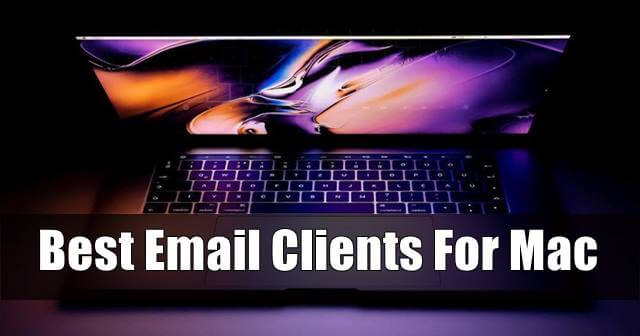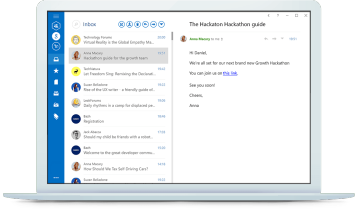

There you’ll find a new entry for ‘Default Mail App’ or ‘Default Browser App,’ depending on which you’re changing. Scroll down to the entry for the app you’ve just downloaded, and tap it. Getting back to the process of switching apps, once you’ve installed one of the approved alternatives, go to the Settings app on your iPhone or iPad. Picking a new default browser or email client from the Settings app. Unlike Birchler, I use The Paper Trail a lot and open The Feed less frequently, but I plan on following his suggestion regarding Hey’s widgets by adding a large one to the second page of my Home Screen. The system provided by Hey for managing and organizing incoming email is what sets it apart from the competition, and it’s so good I don’t mind being locked into a proprietary service. I switched to Hey for my personal and work email a few months ago (we talked about it in this episode of AppStories), and I haven’t looked back since.
/yos_mail_conversations-57f95db95f9b586c35773225.jpg)
Was that choice? Absolutely, but was it good for my email? No way. Then Outlook would have a bug and I’d run to Apple Mail, which would inevitably grow bland and then I’d move back to Spark and the whole cycle would start again. Then Outlook would do something new and I’d be back there.
Simple email clients for mac update#
Spark would release an update and I’d go to it. Apple Mail, Spark, Outlook, Gmail, Airmail, Edison, Blue, Newton, Spike, Polymail…the world was my oyster, and I took part in that game of switching email apps every few months. When I was using Gmail and Outlook as the back end for all of my email, I had my pick of the litter when it came to email apps. Great overview by Matt Birchler on how he’s using Hey for email, almost one year into switching to the service exclusively. Still, a backlog of messages makes any email app harder to use no matter how good it is, so I spent some time over the holidays tidying up. It’s not my job to have a perfectly organized inbox, which is good because it can be a mess at times. I used to feel bad about it, but I don’t anymore. My email accounts get messy as the end of the year approaches because it’s our busy season at MacStories. Store emails, capture new leads/opportunities, and create tasks right from your inbox.īefore I get to the apps I’m using to manage my email day-to-day, I want to cover how I dealt with my email backlog. Supported By Dayliteĭaylite CRM App: Direct Apple Mail integration. I knew it was time to make the most of an imperfect situation by cobbling together a hybrid solution that I hope will provide readers with some pointers on how they can improve how they manage email too. However, what started as patience as I waited for Apple to modernize Mail or a third-party developer to build something better, began to feel like stubborn inflexibility on my part. I don’t abandon that approach lightly because I don’t like the mental overhead of juggling multiple apps with different features to accomplish the same task. This is a problem and conversation that goes back to the early days AppStories, and really, long before even that.Īs 2021 came to a close, I knew something had to change and that I’d have to let go of my longstanding preference of using the same app across all of my devices.

The trouble is that a lot of MacStories readers could say the same thing but would pick an entirely different set of features they care about the most. Even so, the features I value in an email app are ones that I care about a lot. On one level, that’s surprising because I don’t think my email needs are unique or complex. No matter which app I picked, I was never satisfied. I’ve been revisiting my approach to email every year for what seems like forever. Editor’s Note: Why I Abandoned the Search for the Perfect Email App and Am Making Do With a Hybrid Approach is part of the MacStories Starter Pack, a collection of ready-to-use shortcuts, apps, workflows, and more that we’ve created to help you get the most out of your Mac, iPhone, and iPad.


 0 kommentar(er)
0 kommentar(er)
